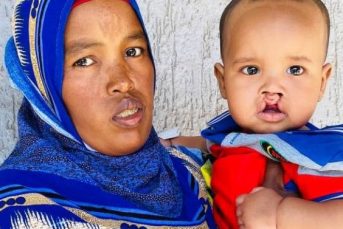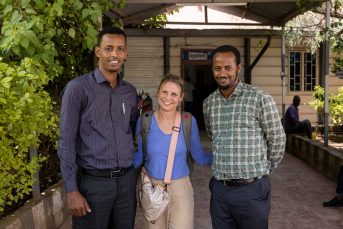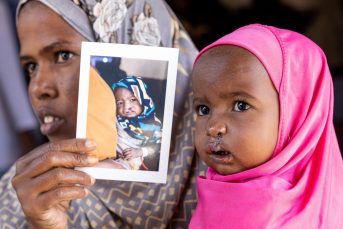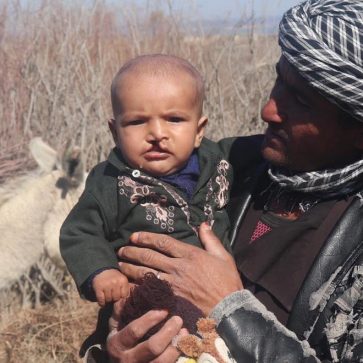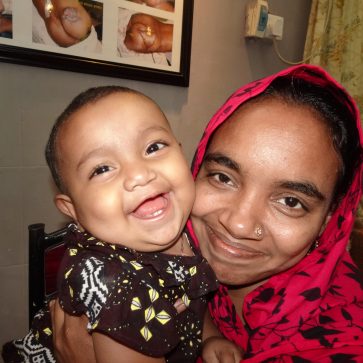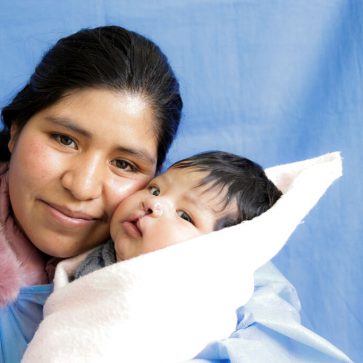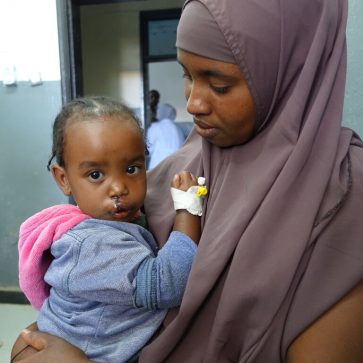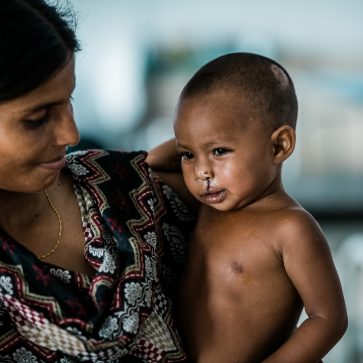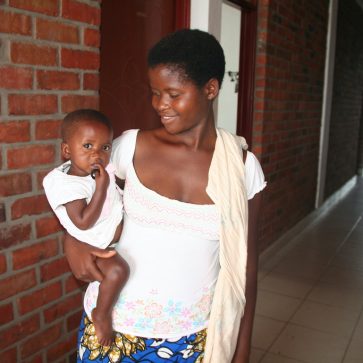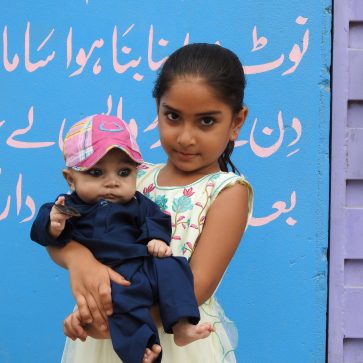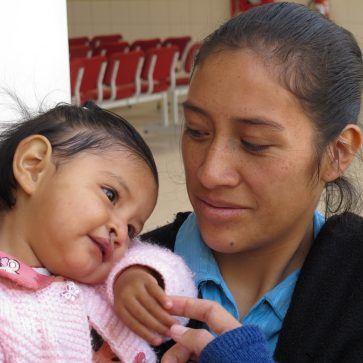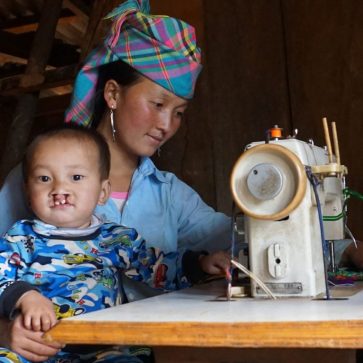One of our newest projects for children with cleft lip and palate is located in Jijiga, Ethiopia. Abdimalik is one of our first patients.
Help for cleft children in
Ethiopia & Somalia
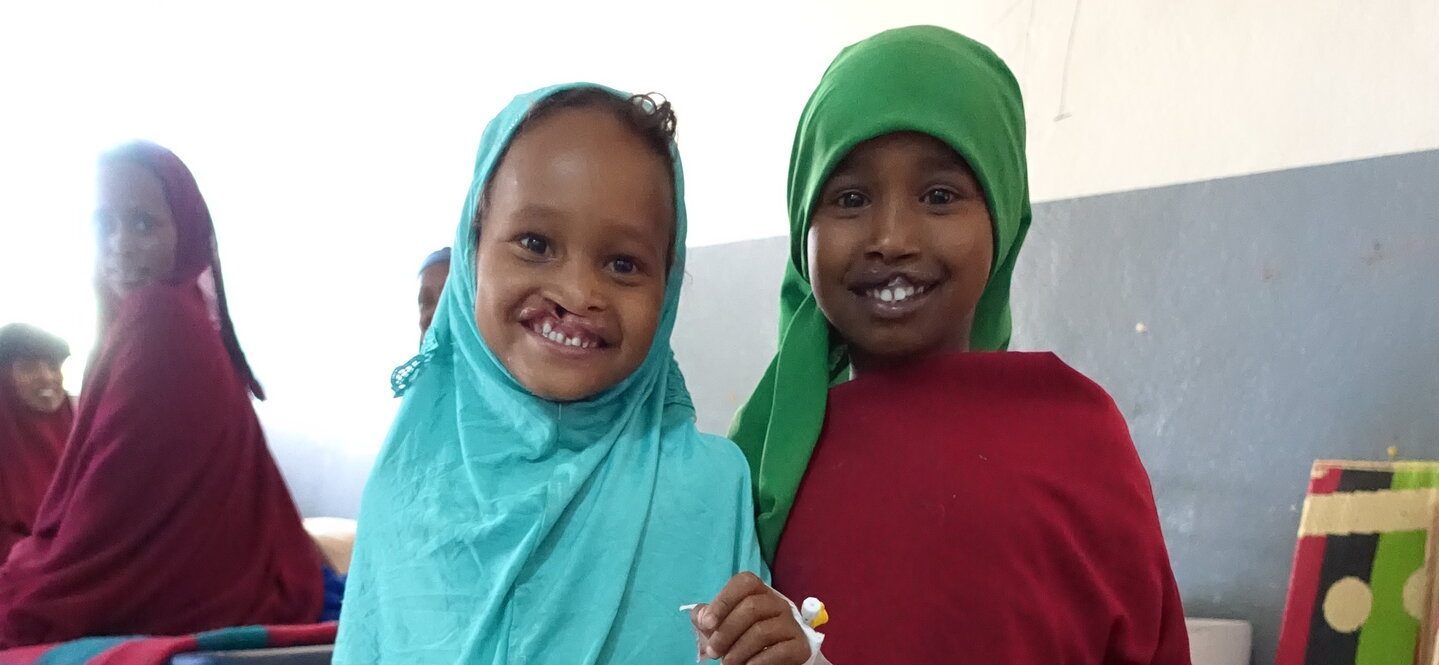
Our work in Ethiopia & Somalia in numbers
Our project to help cleft patients from the Somali settlement region in Ethiopia and Somalia began in 2020.
126 cleft surgeries were provided during our first surgical mission to Ethiopia in late 2023.
226 surgeries are the result of our surgery missions to Somalia.
Deutsche Cleft Kinderhilfe in Ethiopia & Somalia
In 2020, the initiation of our cooperation with the aid organization Somali Medical Care e. V. (Somcare) was the beginning for our help for cleft children from the Somali settlement region. In Somalia, the Somalis make up the majority of the population. They also live in the neighboring areas of Kenya, Ethiopia and Djibouti. Deutsche Cleft Kinderhilfe is currently active in Somalia and Ethiopia.
Focal points of our work
Surgery
The project is currently in the start-up phase and there is no permanent local medical team yet. Our aid in Ethiopia and Somalia has so far been based on missions with international teams from our network of international partners. 2022 was our first year of activity. In March, our first relief operation took place in Garowe, the capital of Puntland in Somalia, supported by a team from India. In late 2022, a team from Bangladesh first operated on 73 cleft patients in Jijiga, the capital of the Somali Region in Ethiopia, followed by another 40 children in Garowe. The next mission to Jijiga took place at the end of June 2023. With the support of our partners from Pakistan, we were able to perform 53 operations. 51 of these patients were children. 15 of them had already received their first surgery from us in late 2022 and now received their second surgery. Our goal is to train at least one local surgeon in cleft surgery in the next few years who will then be able to independently treat children with cleft at our project locations in Ethiopia and Somalia.
Education
The majority of Somalis are nomads who roam the lowlands of the Horn of Africa with their livestock. To reach them, targeted public relations and education work is essential. Developing the structures for this is another top priority.
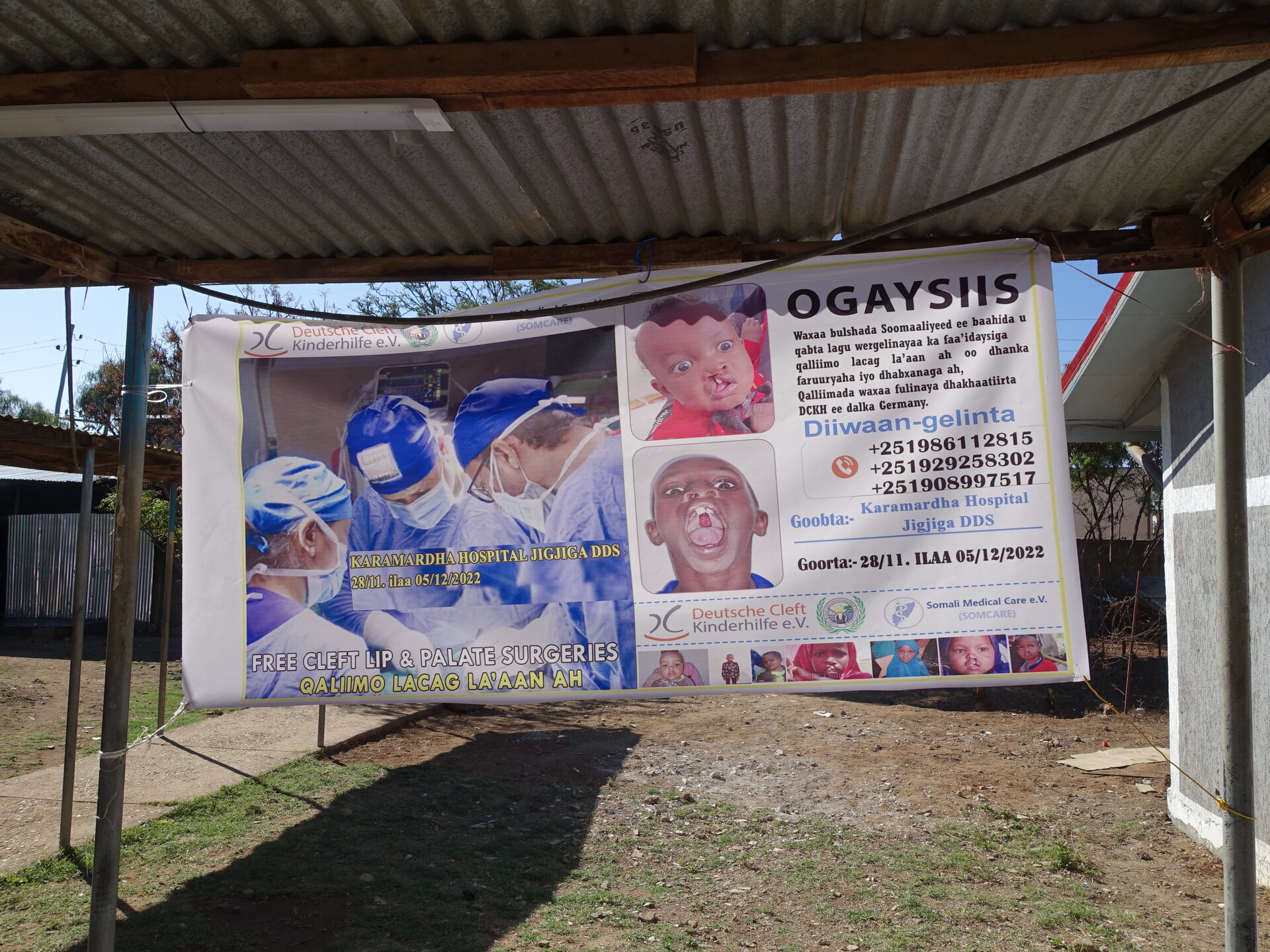
Our partners in Ethiopia & Somalia
The initiator of our aid for cleft patients from the Somali settlement region is Mohamed Ali. Born in Somalia, he left his home country in 1988 and founded the aid organization Somalia Medical Care e. V. (Somcare) in Heidelberg in 2013. We helped fund the construction of the Somcare Hospital, which opened in March 2022 in Garowe, the capital of Puntland in northeastern Somalia. The aim is to establish a permanent project site there.
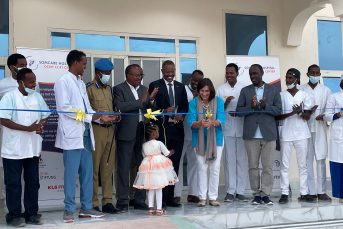 Opening ceremony of the Somcare Hospital in Garowe, Somalia.
Opening ceremony of the Somcare Hospital in Garowe, Somalia.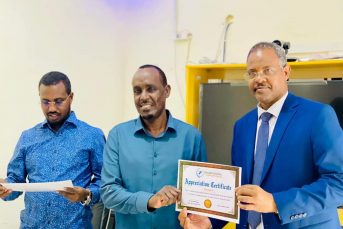 Honored for his work: Mohammed Ali (center) with the health minister (right) of Puntland, Somalia.
Honored for his work: Mohammed Ali (center) with the health minister (right) of Puntland, Somalia.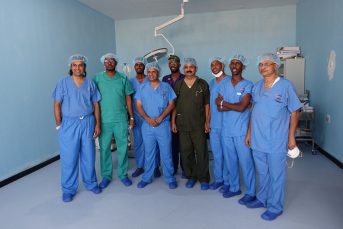 Our first aid mission to Garowe was supported by our Indian teams.
Our first aid mission to Garowe was supported by our Indian teams.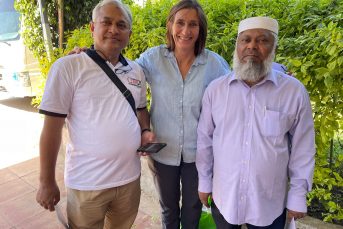 International network: our first mission in Jijiga was accompanied by two of our surgeons from Bangladesh, Dr. Masum (left) and Dr. Zaman (right), as well as Dr. Ulrike Lamlé.
International network: our first mission in Jijiga was accompanied by two of our surgeons from Bangladesh, Dr. Masum (left) and Dr. Zaman (right), as well as Dr. Ulrike Lamlé.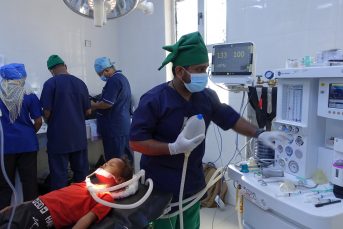 At work: Anesthesist Dr. Asif in Jijiga.
At work: Anesthesist Dr. Asif in Jijiga.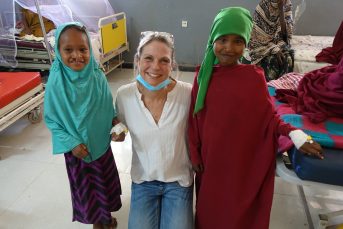 Andrea Weiberg, CEO of Deutsche Cleft Kinderhilfe, during our first mission to Jijiga, Ethiopia.
Andrea Weiberg, CEO of Deutsche Cleft Kinderhilfe, during our first mission to Jijiga, Ethiopia.Impressions from our work in Ethiopia and Somalia
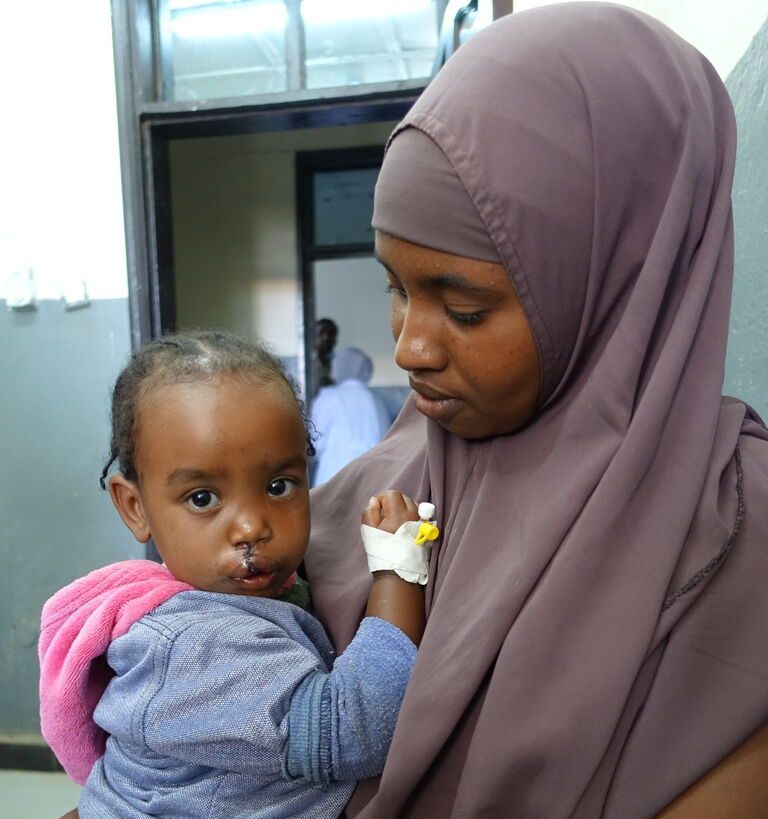
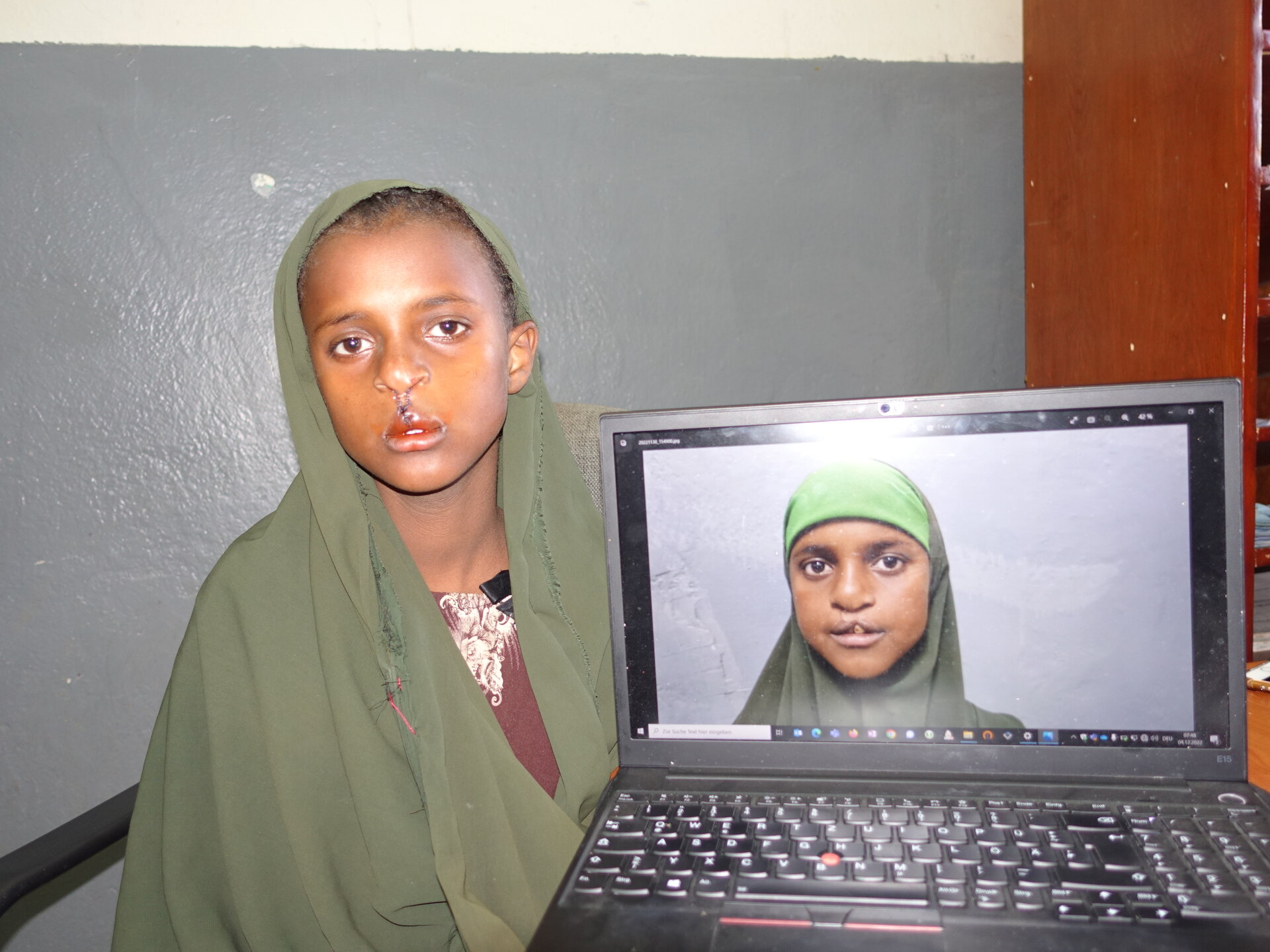
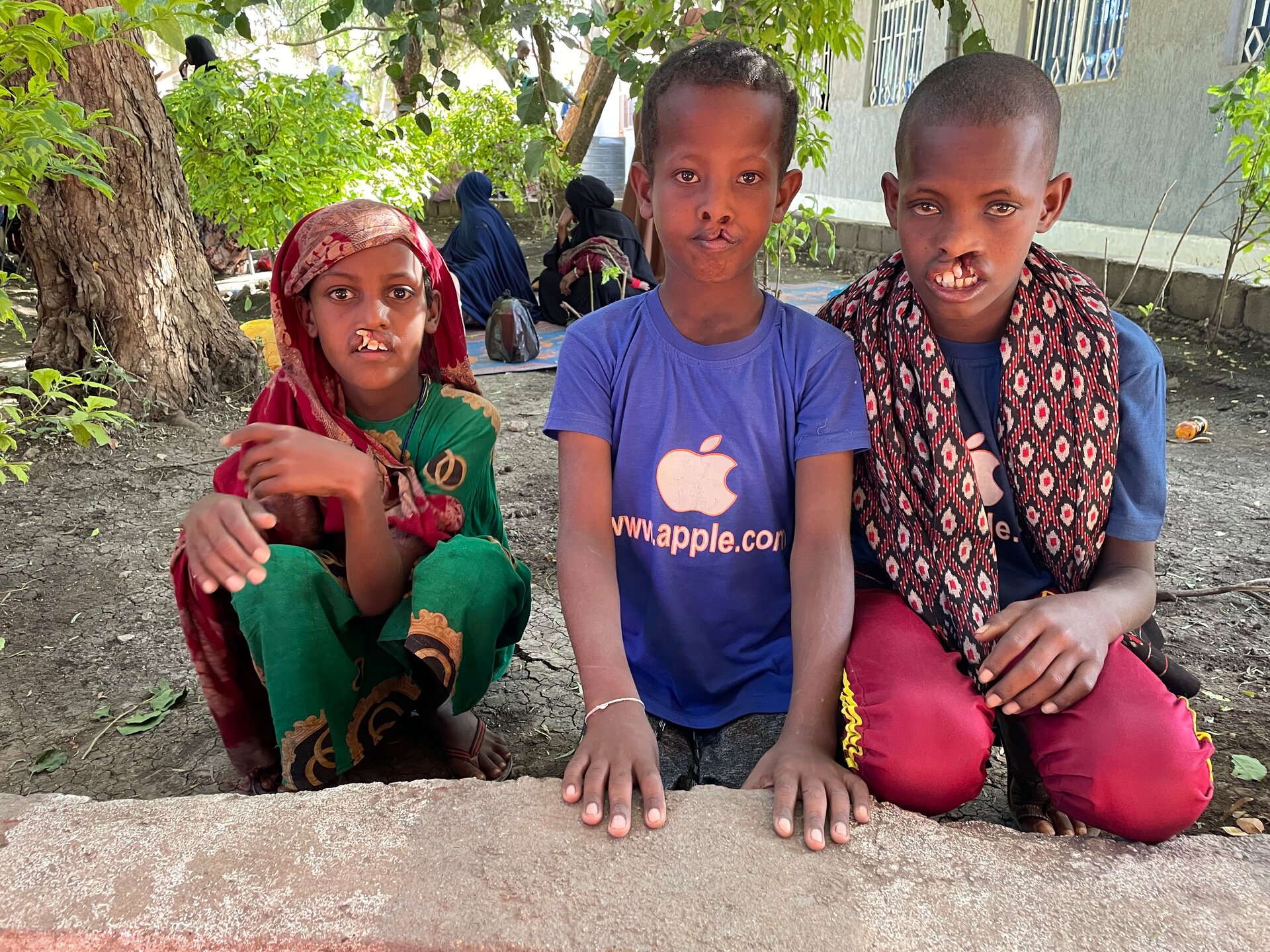
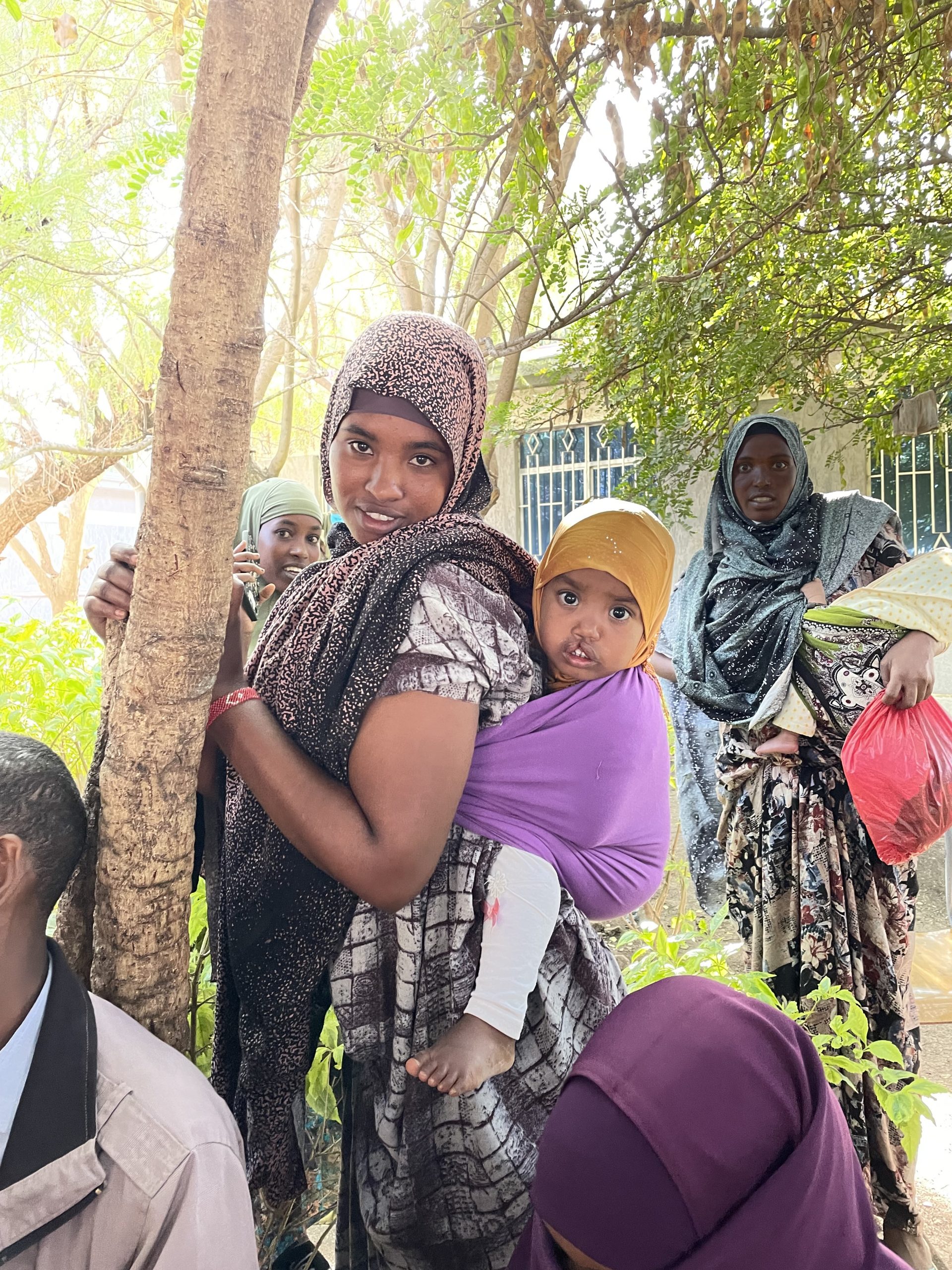
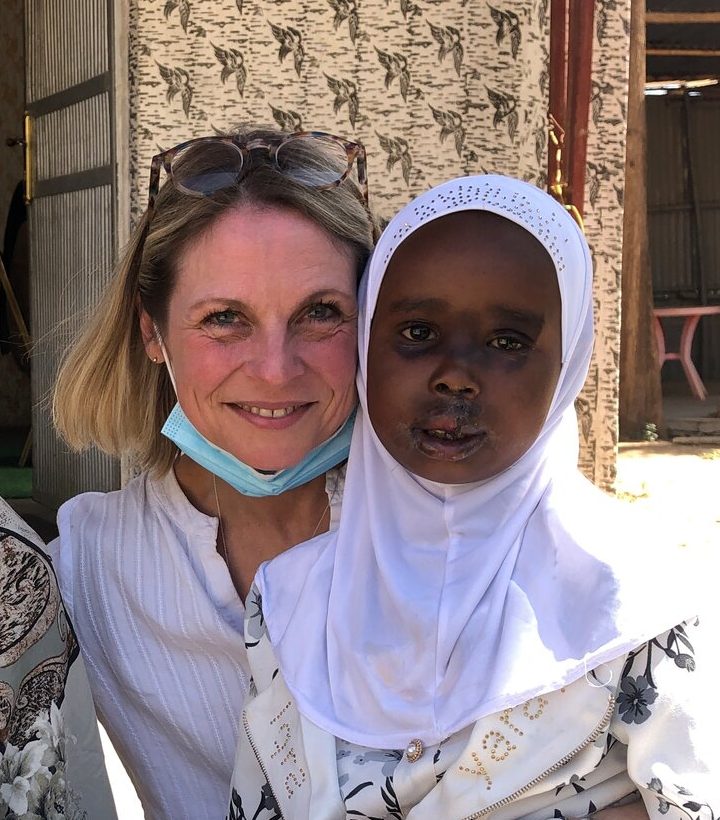
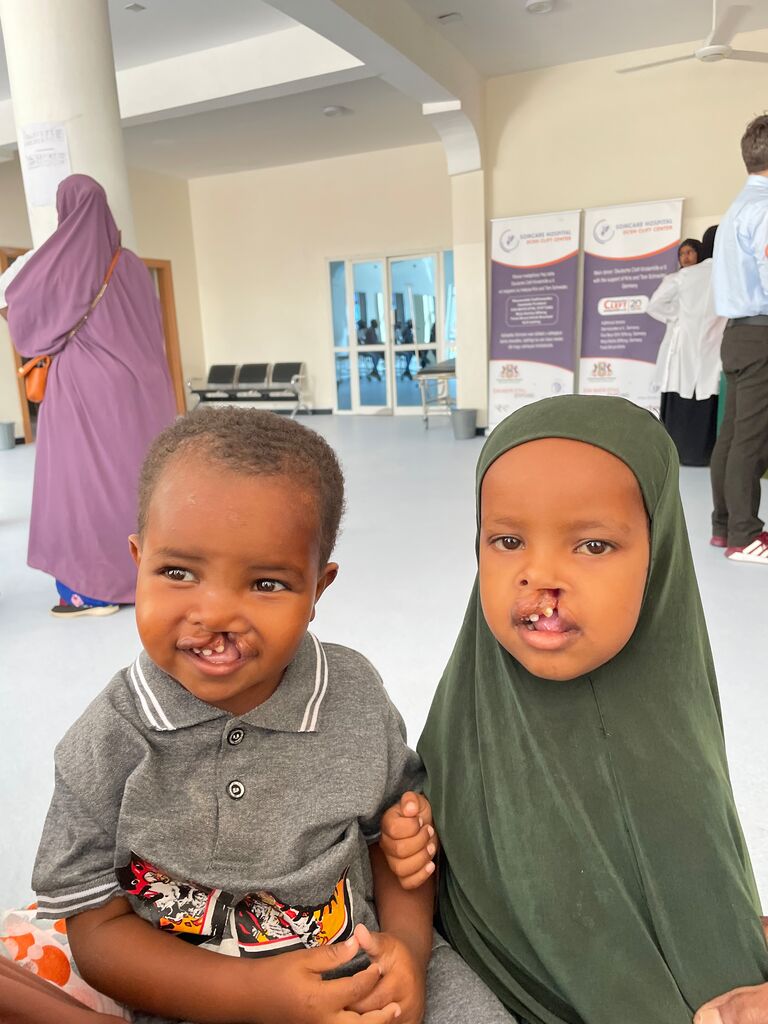
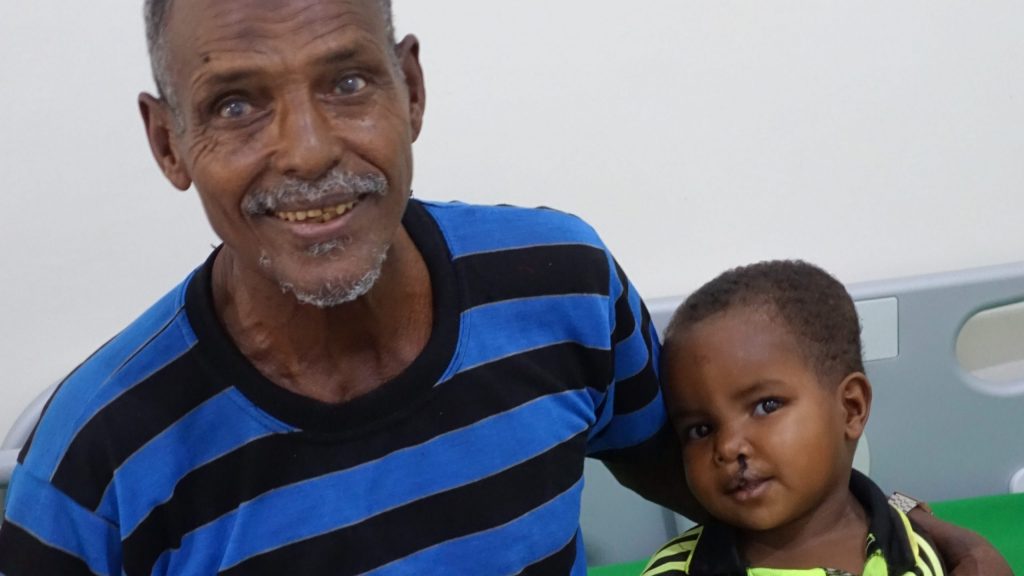
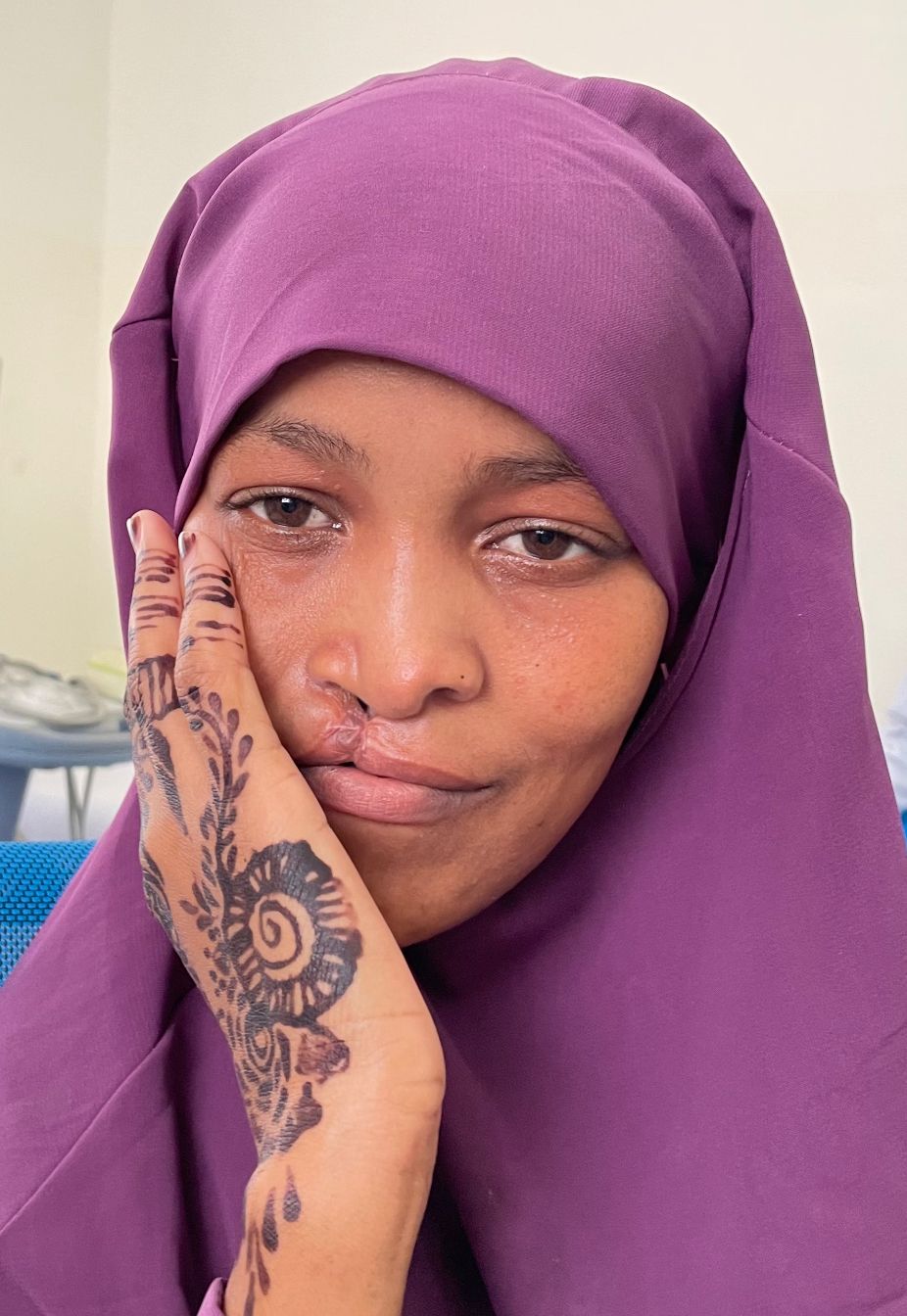
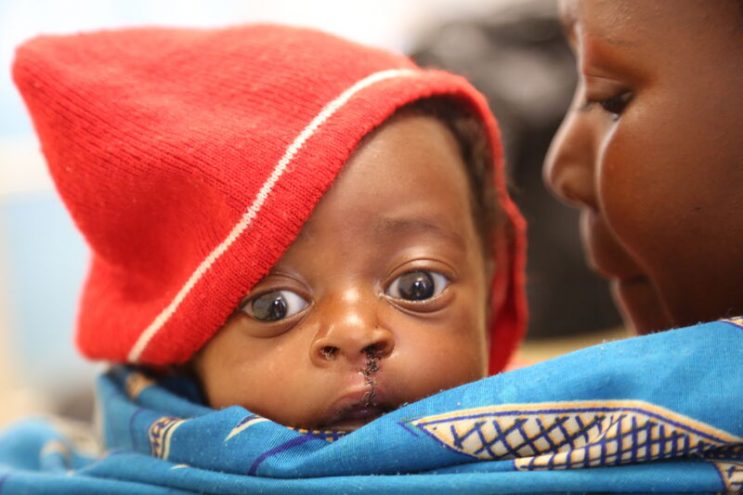
A new life for a child
The surgery is a key turning point in the life of a child with cleft. With your donation, you help change a child's life for the better.
Any amount helps.
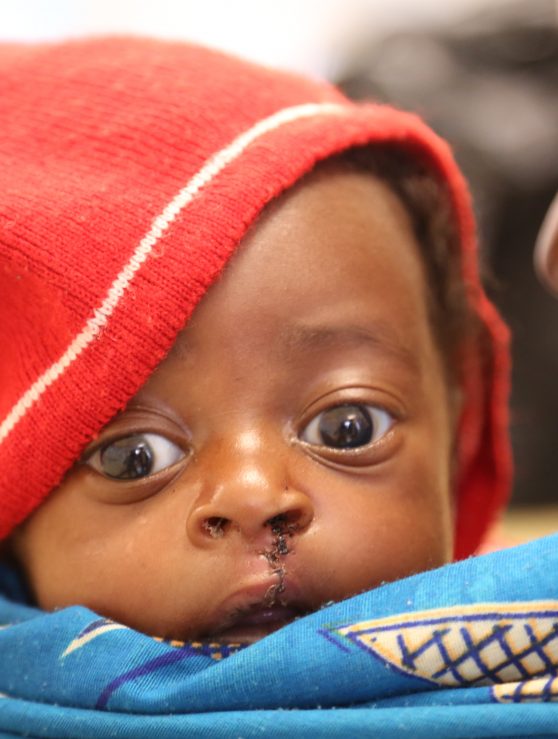
Für ein neues Kinderleben
Die Operation ist ein entscheidender Wendepunkt im Leben eines Kindes mit Spaltbildung. Mit Ihrer Spende tragen Sie dazu bei, das Leben eines Kindes zum Guten zu wenden.
Jeder Betrag hilft.

